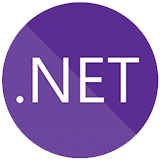If you by now have investigated time in Cuemon .NET Standard, you may have noticed that the naming conventions is similar to the one found in the Microsoft .NET Framework; this is by intent to adapt the fine work of the architects and engineers at Microsoft.
It is also worth mentioning, that all the assemblies are more or less strictly developed following the book; Framework Design Guidelines by Krzysztof Cwalina and Brad Abrams - a must read for all coders, programmers, developers and derived architects.
What should I call you?
It might seem trivial - but comming up with a name to a framework is no small task. In fact, the name for this framework was a combination of several things:
- First i had the domain qmon.dk (which back then stood for Quality Monitoring)
- Since that project was abandoned I considered using the short and handy qmon domain name
- However I did not like having a TLD ending on .dk - it should be more generic - informative if you like
- My light OCD convinced me that the name should have a length of six characters and represent .NET
- Playing with "qmon" started a word procssing on "q" which ended with "Cue"
- "Cue" + "mon" + a TLD of .NET satisfied my requirement of six characters and having a .NET representation
Without further ado Cuemon .NET Framework was born as a brand new assembly package to complement the Microsoft .NET Framework.
Fun fact: the original, internal name prior to 2008 was MM.Framework.
Timeline
2008
-
Cuemon .NET Framework package was born and consists of four members
- Cuemon
- Cuemon.Data
- Cuemon.Web
- Cuemon.Xml
2009
- Research, maturing and POC-implementations
2010
- Project website was launched - an ASP.NET website built with Cuemon
-
The assembly package was extended with one new member and now consists of
- Cuemon
- Cuemon.Data
-
Cuemon.Data.Entity
- Cuemon.Web
- Cuemon.Xml
2011
- Cuemon goes NuGet and was assigned the most accommodating license from Creative Commons
-
The assembly package was extended with two new members and now consists of
- Cuemon
- Cuemon.Data
- Cuemon.Data.Entity
-
Cuemon.Data.Entity.SqlCeClient
- Cuemon.Data.SqlCeClient
- Cuemon.Web
- Cuemon.Xml
- Parts of Cuemon is now available through a RESTful web API
2012
- Online and offline documentation for Cuemon .NET Framework now provided using Document! X by Innovasys
-
The assembly package was extended with one new member and now consists of
- Cuemon
- Cuemon.Data
- Cuemon.Data.Entity
- Cuemon.Data.Entity.SqlCeClient
- Cuemon.Data.SqlCeClient
-
Cuemon.ServiceModel
- Cuemon.Web
- Cuemon.Xml
2013
- The most ground breaking and codetastic year of the Cuemon project
- Established a supportive blog for this project with insights, motives and background information
- A new project is launched to complement this project; Nebula API - a technology neutral RESTful web API that replaces the one from 2011
-
The assembly package was extended with a new complementary assembly package for users of .NET Framework 3.5 and newer
- Cuemon.Extensions
- Cuemon.Data.Extensions
- Cuemon.Data.Entity.Extensions
- Cuemon.Web.Extensions
- Cuemon.Xml.Extensions
2014
- Cuemon .NET Framework Additions was renamed to simply Cuemon .NET Framework
2015
- Cuemon .NET Framework 3.0.2015.1500 was released to CodePlex as open-source under the MIT License
2016
- Cuemon .NET Core 4.0.2016.600 was released to CodePlex as open-source under the MIT License
2017
- Both Cuemon .NET Framework and Cuemon .NET Core was moved to GitHub
- Cuemon .NET Framework is no longer receiving updates leaving it stale at version 4.1.2017.400
2018
- Cuemon .NET Core was renamed to Cuemon .NET Standard
- Cuemon .NET Standard is divided into 23 NuGet packages
- Cuemon .NET Standard adapts DocFX documentation
- Cuemon .NET Framework is no longer being maintained and all NuGet packages has been removed
- New website powered by Cuemon.AspNetCore.Pacakge
- New blog powered by Ghost
2019
- 5.0.2019.40 was the last version of Cuemon .NET Standard
2021
- Cuemon .NET Standard was renamed to Cuemon for .NET
- Removed support for .NET Standard 1.4; lowest common denominator is .NET Standard 2.0
- Added support for .NET Core 3.1, .NET 5 and .NET 6
- Most of the code has been refactored, optimized and unit tested to promote the word of clean code
- Source Link enabled for your convenience; debug directly into the code of Cuemon
- 42 NuGet packages with an additional 4 productivity App-packages
- Added support for powerful xUnit extensions that greatly simplifies unit testing for ASP.NET Core
- Extended current Json.NET extensions to be even more powerful
2022
- Cuemon .NET Standard was renamed to Cuemon for .NET
- Removed support for .NET Core 2.x and .NET 5
- Added support for .NET 7
- Most of the code has been refactored, optimized and unit tested to promote the word of clean code
- 48 NuGet packages with an additional 4 productivity App-packages
- Added support for powerful xUnit extensions that greatly simplifies unit testing for ASP.NET Core
- Extended current Json.NET extensions to be even more powerful
- Added support for System.Text.Json with close to same feature-set as Json.NET equivalent (or superior)
- Removed support for .NET Core 3.1
- Added (early) support for YAML serialization
2023
- Added support for .NET 8 (LTS)
- Removed support for .NET Standard 2.0 for all ASP.NET Core related projects
- General and continued house-keeping of the projects
- Extended unit-test to include TFM net8.0, net7.0, net6.0 and net48 for Windows
- Extended unit-test to include TFM net8.0, net7.0 and net6.0 for Linux
2024
- Added support for .NET 9 (STS)
- Major refactoring to reduce size of core assemblies
- Removed all non-official .NET APIs to Codebelt
- Extended unit-test to include TFM net9.0, net8.0 and net48 for Windows
- Extended unit-test to include TFM net9.0, net8.0 for Linux
2025
- Added support for .NET 10 (LTS)
- Extended unit-test to include TFM net10.0, net9.0 and net48 for Windows
- Extended unit-test to include TFM net10.0, net9.0 for Linux
 It goes without saying, that without Microsoft .NET there would be no Cuemon for .NET.
It goes without saying, that without Microsoft .NET there would be no Cuemon for .NET.
 DocFx is used to produce documentation from source code including raw Markdown files.
DocFx is used to produce documentation from source code including raw Markdown files.
 Azure DevOps from Microsoft is used for CI/CD integration with GitHub.
Azure DevOps from Microsoft is used for CI/CD integration with GitHub.
 Visual Studio 2019 from Microsoft is used as the primary tool for writing CSharp code.
Visual Studio 2019 from Microsoft is used as the primary tool for writing CSharp code.
 Visual Studio Code from Microsoft is used to write anything else but CSharp code.
Visual Studio Code from Microsoft is used to write anything else but CSharp code.
 StackOverflow.com by Stack Exchange Inc. for providing the community for developers helping out each other.
StackOverflow.com by Stack Exchange Inc. for providing the community for developers helping out each other.
 NuGet Package Explorer is a very helpful tool to iron out kinks of NuGet packages.
NuGet Package Explorer is a very helpful tool to iron out kinks of NuGet packages.
 GitHub from Microsoft is used to host the source code of Cuemon for .NET.
GitHub from Microsoft is used to host the source code of Cuemon for .NET.
 Distributed packages are based on NuGet.
Distributed packages are based on NuGet.
